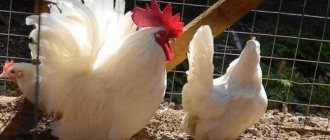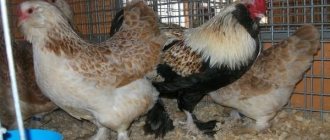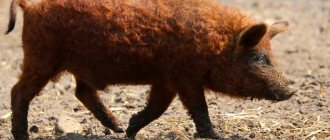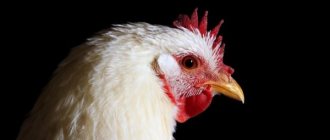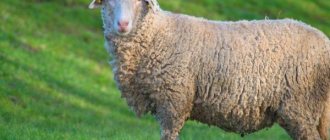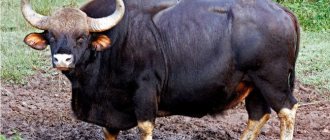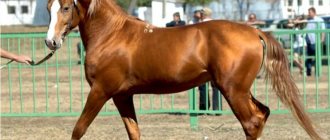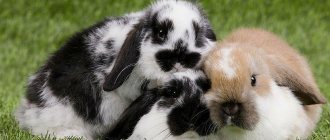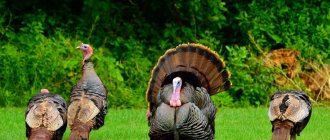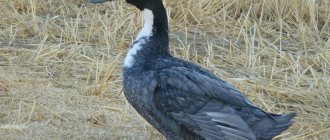Home » Articles about chickens » Aurora chicken breed
The Aurora chicken breed, bred by VNIIGRZh breeders, belongs to the egg production direction. The birds have beautiful plumage and can also be grown for decorative purposes.
Aurora Blue breed of chickens: main characteristics
Although the Aurora Blue breed is relatively new, little is known about it. Information about the origin of laying hens is not publicly available.
It is known that scientists from the All-Russian Research Institute of Genetics and Breeding of Farm Animals (VNIIGRZh) worked on the creation of the blue beauty.
Scientists planned to breed a universal chicken that could have attractive appearance. To achieve this goal, geneticists used representatives of the Australorp breed.
The problem with the resulting hybrid is that in the second generation the color splits - not only blue, but also white and black cubs are obtained.
According to the type of productivity, the Aurora Blue chicken breed is classified as an egg breed.
Officially, the sale of hatching eggs and pedigree young animals is carried out by the Pushkin Gene Pool.
Source: genofund.narod.ru
External signs
Thanks to long-term selection work, the bird inherited an attractive appearance from its ancestors.
The color of both sexes is blue, with a dark border on each feather. Roosters have a slightly darker mane, back, and wings, and the feathers of the roosters are evenly colored.
The body is horizontal, with a slightly elongated shape, folded harmoniously.
The “ladies” have neat, small heads on short necks. Roosters have larger ones. A peculiarity is that representatives of both sexes have large, well-developed leaf-shaped combs of a bright red color, like the earrings.
The face has huge, expressive brown or orange eyes. The beak is small, colored blue-gray, matching the paws. To complete the picture of appearance, let's also consider weight indicators.
- An adult rooster has a body weight of 2.5 kg to 3 kg.
- An adult laying hen weighs 2-2.5 kg.
The temperament of feathered beauties is a little complex - they are shy, overly cautious. They take a very long time to get used to their owners, but even after that they try to stay away from people.
The winged family loves activity and shows curiosity about everything that happens around them. Roosters are non-conflicting, even when kept together with other species, and behave with restraint.
Puberty, egg production
Early maturing hens have always been valued - this significantly reduces the cost of feed and care. Aurora Blue breed of chickens is a cross that is capable of giving its owners their first testicles at an early age.
Egg laying is established quickly. In the first year, the whooping whale produces about 220 eggs in white shells. The average weight of each egg is from 55 to 58 g.
This chicken often lays fairly large eggs that are only white. If Aurora lays very small eggs, then they can be sold at the lowest price, since their size causes the cost to drop. This breed of chicken lays about 220 eggs per year. This is a good indicator for laying hens.
The weight of the chicken itself is quite small - about two kilograms, and its smaller version is about 1.5 kg. The weight of the chicken itself does not affect its egg production. Both small and large chickens of the Aurora breed produce quite a lot of eggs per year. Therefore, to save money, farmers very often purchase the smallest specimens. This is due to the fact that feeding them requires an order of magnitude less feed, making them much easier to maintain.
The hen begins to lay eggs quite early. This is due to rapid precocity. Already at the age of about 4 months. The hen begins to lay her very first eggs. Egg production rates are increasing every month.
The breed can very rarely sit on eggs. The reason is simple - all representatives of the egg orientation are not prone to such actions.
The plumage of such chickens is quite dark. Their decorative coloring is very valuable for lovers of rare breeds. To have an excellent laying hen and decorative chicken, take a closer look at this breed.
Source: onfermer.ru
What are they good for?
- Versatility.
- Long period of egg production.
- Endurance and resistance to chicken diseases.
- Friendly, calm disposition and sociability.
These are advantages, but there is one weak point. The Adler breed of chickens most often fails to fulfill their maternal duties, which is why poultry farmers have to replace mothers for chickens using an incubator.
So we looked at one of the most popular breeds of laying hens.
Good luck and success to you!
Subscribe to site updates and you will always be the first to receive new, interesting information about feathered beauties!
See modern products for poultry and livestock farmers that improve the health of pets and make our work easier.
Productivity
The productivity of Aurora is determined by egg production.
Sexual maturity and average annual egg production
Chickens begin laying eggs after 4 months. It has been noted that early maturity greatly depends on what time of year the chicken was born. Birds that were born from February to March begin to lay eggs earlier than others. This is due to the length of daylight hours.
Peak egg production is observed in birds that are one year old. In subsequent years, this figure decreases by 15-20% annually.
The average annual productivity of one laying hen is 200-220 large eggs weighing 55-58 g each, with a white shell.
These are good indicators of egg production. When compared with highly productive purebred chickens, they can produce up to 370 eggs per year. The record holders are Leghorn hens, whose representative set a world record in 1970 by laying a record 371 eggs.
Productive qualities
Meat
Weight at the age of 12 months is: for hens - 2.5-2.8 kg, for cockerels - 3.5-3.9 kg. Birds are distinguished by productive longevity - up to 3-4 years. The meat corresponds to the quality inherent in meat breeds.
Egg
Adler chickens begin to lay eggs at about 6 months. Egg laying that begins before this age can lead to problems with internal organs and a decrease in productivity. The onset of egg production is controlled by diet and lighting in the chicken coop.
The Adler silver hen lays a large, marketable egg, weighing 58-60 g, light beige in color. In the first year you can get up to 190 eggs from her.
Egg production in winter decreases slightly, given that the birds are kept at above-zero temperatures in the chicken coop. Farmers note a richer taste of eggs and tight whites, in contrast to exclusively egg breeds and crosses.
The survival rate of Adler silver chicks is high - 98%.
Egg production without loss of quantity continues for up to 4 years, after which the stock is renewed.
Problems
Poor survival of chickens or small eggs in laying hens may indicate that breeding work was not carried out in breeding farms to improve the marketability of eggs, or that there was inbreeding of chickens.
When a laying hen gains excess weight, the number of eggs may decrease.
Content Features
Representatives of the Aurora breed do not require special conditions - the same maintenance recommendations apply to them as for other egg breeds.
In the coop and on the run
These chickens can live in unheated chicken coops, but by maintaining a warm temperature around +23-25 ° C, their productivity will be much higher. In winter, the thermometer in the chicken coop should not fall below 15 °C.
The chicken coop should be spacious: for 2-3 laying hens - at least 1 square. m area. Representatives of this breed love to live on multi-level perches.
general information
The decorative component is not the main criterion by which farmers choose blue chickens for breeding. They also have various beneficial qualities because they were bred for specific purposes. For example, in addition to simply ornamental birds, there are meat, egg and fighting chickens. Almost all the characteristics of these breeds vary, and it is worth considering in detail some of the most common types.
How to feed laying hens correctly
Thanks to the diet and the presence of a warm chicken coop, Aurora’s egg production will be year-round. They are fed twice a day, provided they have free range during the day. If chickens are deprived of the opportunity to independently search for food during the day, then feeding is increased to three times a day.
The young are fed three to four times. You can buy ready-made feed in the form of a mixture. As a vitamin supplement, you need to include only grain, green feed, and vegetable tops in the diet. In households, chickens are often given “wet mash” - table scraps.
Here is an approximate daily diet for Aurora chickens and other egg breeds: 120 g of grain (corn, wheat, barley, oats), 30 g of mash, 100 g of boiled potatoes, 2 g of chalk, salt, bone meal, yeast. Experienced farmers advise giving half of the grain sprouted. It is important to adhere to the norms. Overfeeding and, conversely, underfeeding poultry have a detrimental effect on its health and productivity.
Let's look at the components of the diet of egg-laying chickens.
Breeding
One of the qualities of the breed that breeders had to sacrifice in favor of productivity is brooding. Adler Silvers are excellent breeders, but poor brood hens. Although at the same time the level of fertilization of eggs, and then the survival rate of chicks, is high. This means that in order to breed offspring, individuals of other breeds or an incubator are needed.
The right time for breeding is the first days of May; in this case, there will be no problem with early clutches of immature young animals.
Feeding the chickens
Thanks to the innate qualities of the breed, almost all chickens survive. To achieve the best performance, you need to follow the feeding rules.
Be sure to read:
Chickens Super Nick: description of the breed, photos and reviews from poultry farmers
| Chick age | Feed composition | Feeding frequency |
| First day of life | Hard-boiled egg, a small amount of semolina | Every 1 – 1.5 hours |
| 2 – 5 days of life | Egg, finely chopped fresh herbs (dandelion leaves, chickweed, nettle). You can give yogurt separately (whole milk is not allowed) | Every 2 hours |
| 5 – 10 days of life | Gradually reducing the amount of eggs, increase the greens, add finely grated raw vegetables: pumpkin, carrots, beets. Mix dry yeast and fish oil into the food. Allowed to introduce special feed | Every 3-4 hours |
| Up to 28 – 30 days of life | Make wet mash from greens, first feed, cottage cheese, vegetables (add potatoes). Place a container with sand and crushed shells in the cage. | Every 4 hours, no night feedings |
| 1 to 2 months | Gradually add crushed barley to the previous diet | Morning, afternoon, evening |
Tips for care and maintenance
The subtleties of caring for the hens in question have much in common with traditional recommendations that are universal for all laying hens.
Poultry farmers speak of them as winter-hardy representatives of the bird world. Therefore, Aurora Blue can survive frosts and colds indoors without heating.
- Additional heating improves egg production.
- The living conditions that the winged family needs are a spacious house with high perches. It is permissible to install multi-level perches.
- Choughs value their “personal space”, so their roost should not be crowded.
- The family’s home must be safe - all sharp corners, protruding nails and other elements that could accidentally injure the bird must be removed.
- There is a condition without which it will be impossible to reveal the full productive potential of a feathered flock - this is maintaining the light regime. To ensure egg laying does not stop, the house should be illuminated for about 16 hours a day.
During the molting period
During the molting period (October-November), chickens' productivity decreases, since all the body's efforts are spent on growing new plumage.
At this time, the bird needs more protein, so more foods containing protein substances should be included in the feeding. This can be a mash based on meat broth, fermented milk products (cottage cheese, yogurt).
Important components of the menu are boiled vegetables, chalk, mineral supplements, and vitamin food supplements. If the bird does not have the opportunity to walk, it should have sand and clay in its diet.
Source: fermer.ru
Molting and break in egg production
The beginning of seasonal molting often becomes a cause for concern for beginners in the business of breeding birds. But this is a natural process - it is safe and even beneficial for your herd.
Let's consider a few recommendations that will help winged beauties survive the molting season faster and emerge from it without losses.
- Reduce daylight hours to avoid prolonging molting.
- Nourish your birds' health with vitamins, minerals and nutritious food.
- Take care to avoid hypothermia during shedding.
Incubation
When breeding chickens of this cross using an incubator, you must follow standard incubation rules.
Table of temperature and humidity modes
| Period |
